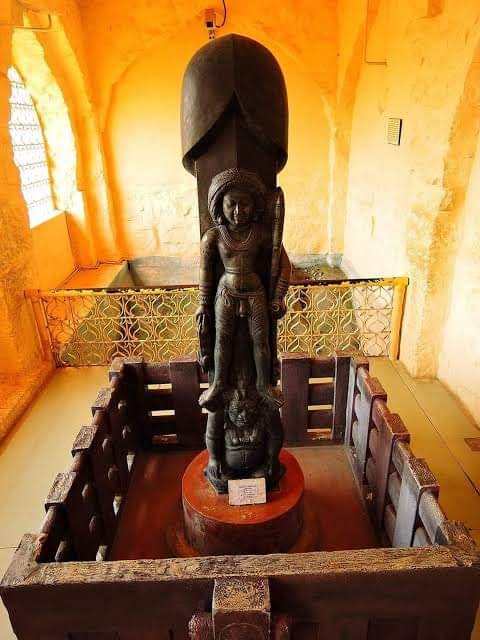Big #Altcoin thread for $ALTS: Where are we at in the cycle, how long do we have, is this #ALTSEASON, what are the relationships like, all of that. $BTC #Bitcoin $ETH $LINK #Altcoins
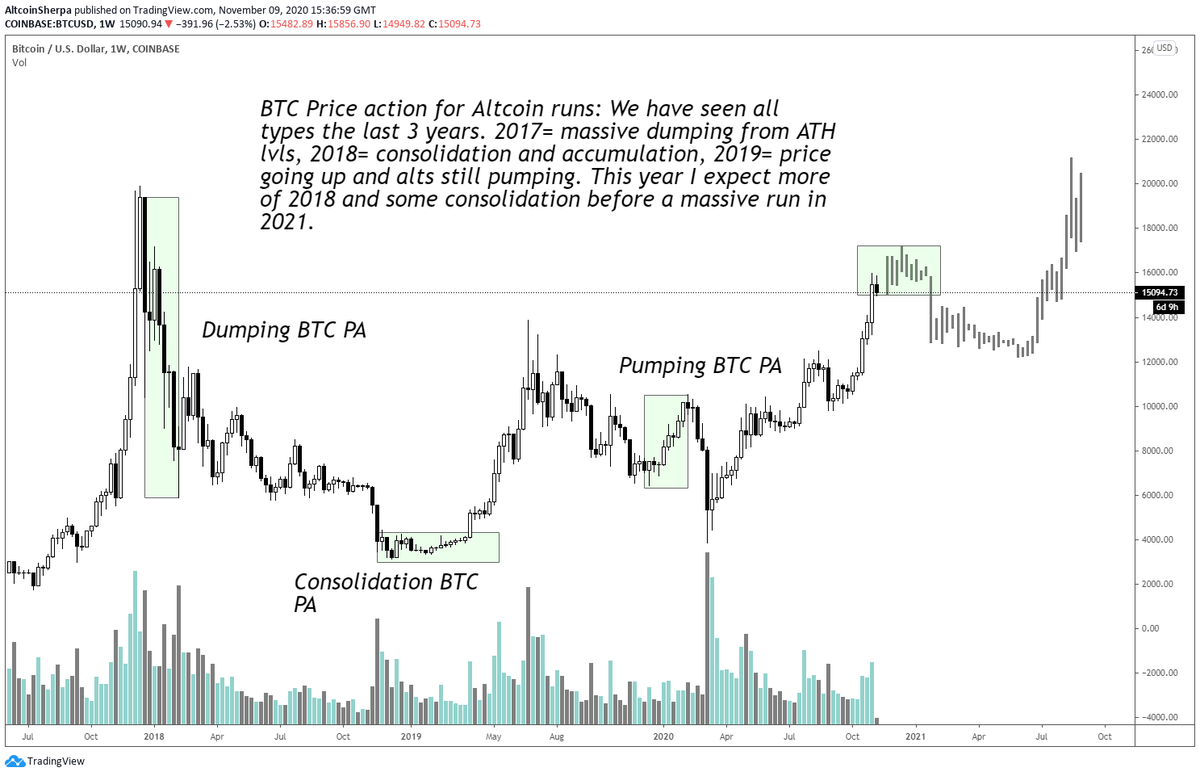
- $BTC PA
- $BTC.D
-Seasonality
- $ETH
- and much more
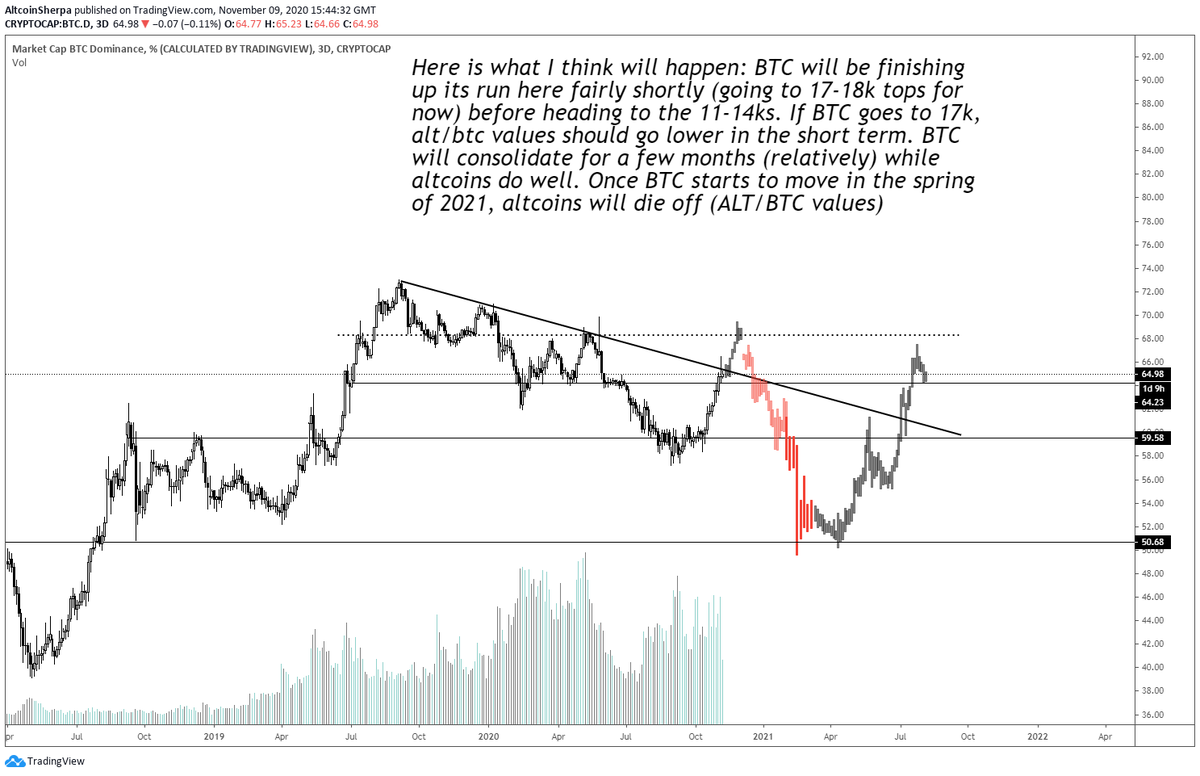
BTC up= ALTBTC -/ ALTUSD +
BTC down= ALTBTC -/ALTUSD-
BTC range = ALTBTC+/ALTUSD+
Always exceptions ofc
https://t.co/v9pvOOEWsK
$BTC: Here is a timeline of what I think is going to happen over the next 6 months. While I try as hard as I can to trade level to level, trading #Altcoins is like being a seasonal worker sometimes and thinking ahead is important. Short thread below $ALTS #Bitcoin #XBT pic.twitter.com/bggdjfjMjJ
— Altcoin Sherpa (@AltcoinSherpa) October 15, 2020
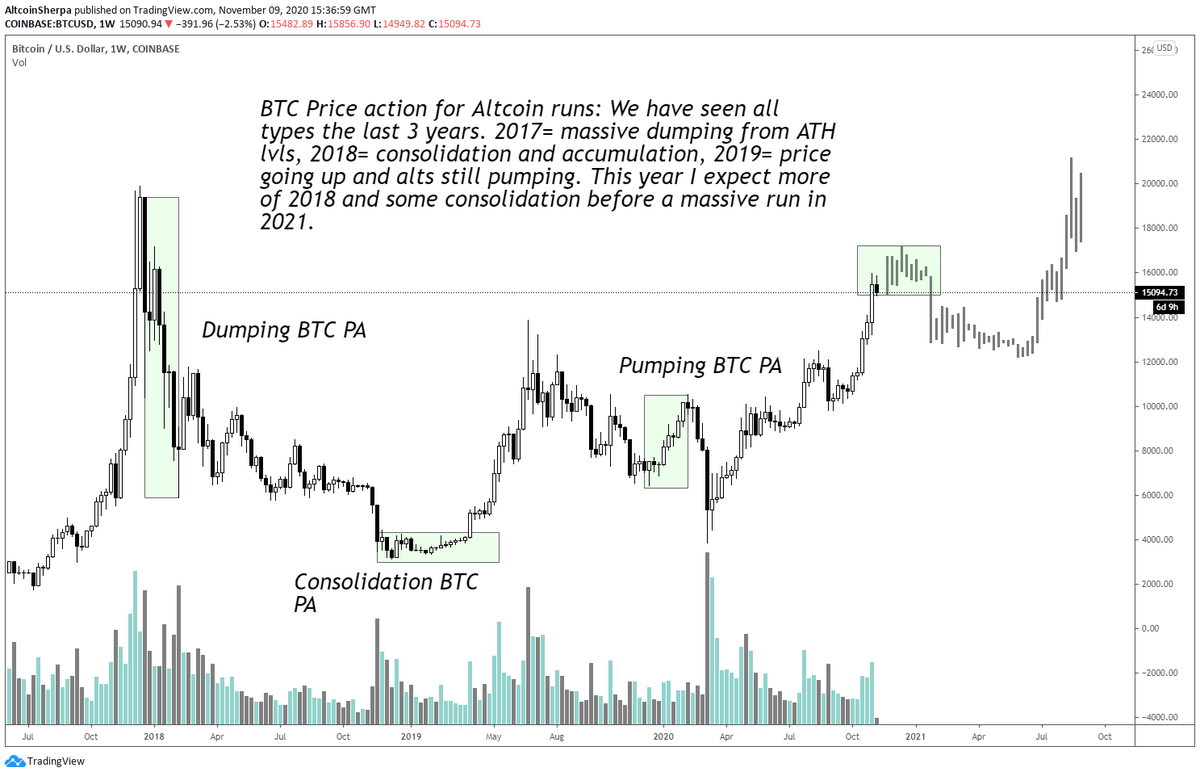
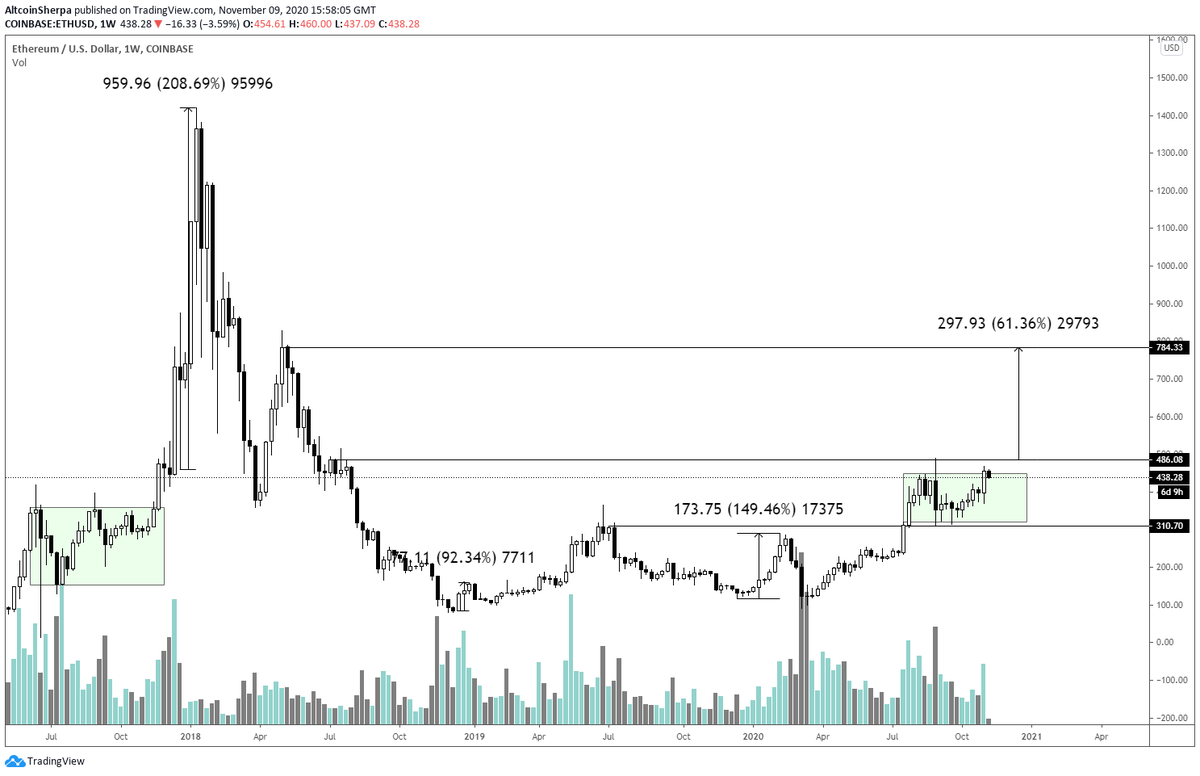

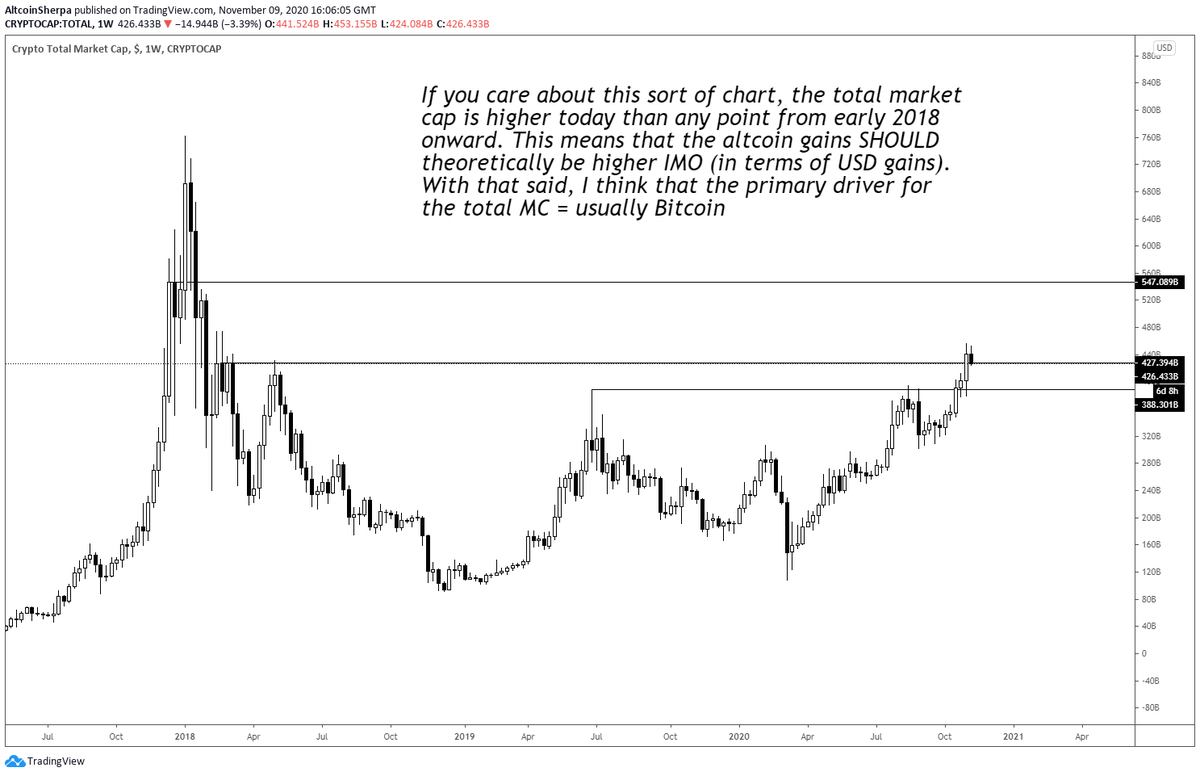
-No old bag holders (resistance)
-New technology and new hype
-Price discovery easily attainable and not -90% price history
-Lots of new hype
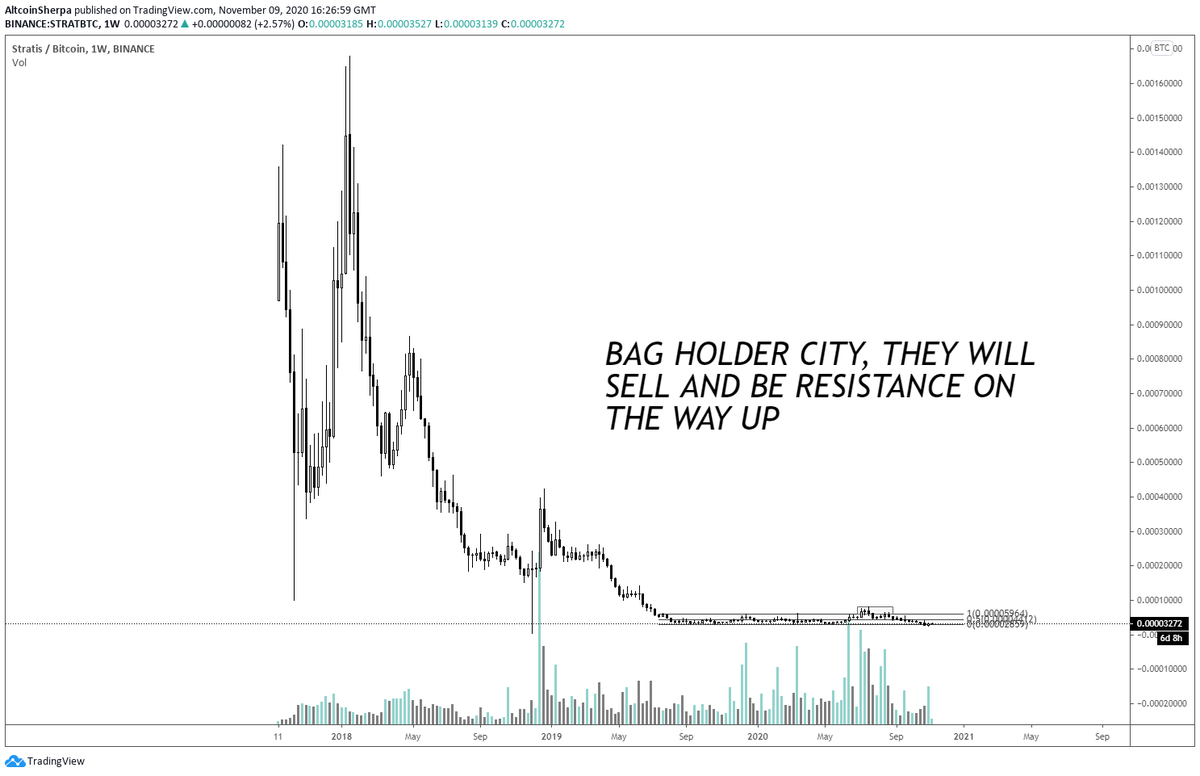

https://t.co/HY5g8HFrW5
Big #Altcoin thread: How much longer do we have for $ALTS? Will the summer be hard for the #ALT market like it has the last 2 years or will it be different? #Bitcoin $BTC #Crypto pic.twitter.com/C5DBDEkqng
— Altcoin Sherpa (@AltcoinSherpa) June 15, 2020
More from Crypto
You are running out of time to get ahead in cryptocurrency.
You know what's coming:
🔺️ Regulation
🔺️ More shutdowns
🔺️ Banks deciding who gets to do business
It's time you got your own crypto wallet.
Don't know how? I'll show you.
/////THREAD\\\\\
METAMASK
What's metamask? It's a wallet. That you -- I mean YOU -- own.
You see, when you buy crypto through an exchange like CoinBase, you own it but only kind of.
If they get
🔺 Hacked
🔺 Shutdown
🔺 Servers crash
-- your money is STUCK.
We are gonna avoid that 👇

First thing,
Go to
https://t.co/JXAp9o5RzJ
You can download it on your computer. It's a browser extension.
Alternatively, go to the app store on your Android or iPhone. It's there too.
As part of the setup process, you will choose a password.
More importantly though...
SEED PHRASE
As you follow the setup process, you will be given a 12-word seed phrase.
WRITE. THIS. DOWN.
Take it down and guard it like the map to Davey Jones' Locker.
THESE ARE THE ONLY WAY TO RECOVER YOUR ACCOUNT.
DO NOT LOSE.
We good? Great.
Let's continue.

Once you're all setup, your MetaMask wallet is going to look something like the picture below.
See where it says Crypto Address? That's where your actual address will be.
It'll be a random arrangement of letters, numbers, etc.
Click on it to copy to your clipboard
NEXT STEP

You know what's coming:
🔺️ Regulation
🔺️ More shutdowns
🔺️ Banks deciding who gets to do business
It's time you got your own crypto wallet.
Don't know how? I'll show you.
/////THREAD\\\\\
METAMASK
What's metamask? It's a wallet. That you -- I mean YOU -- own.
You see, when you buy crypto through an exchange like CoinBase, you own it but only kind of.
If they get
🔺 Hacked
🔺 Shutdown
🔺 Servers crash
-- your money is STUCK.
We are gonna avoid that 👇

First thing,
Go to
https://t.co/JXAp9o5RzJ
You can download it on your computer. It's a browser extension.
Alternatively, go to the app store on your Android or iPhone. It's there too.
As part of the setup process, you will choose a password.
More importantly though...
SEED PHRASE
As you follow the setup process, you will be given a 12-word seed phrase.
WRITE. THIS. DOWN.
Take it down and guard it like the map to Davey Jones' Locker.
THESE ARE THE ONLY WAY TO RECOVER YOUR ACCOUNT.
DO NOT LOSE.
We good? Great.
Let's continue.

Once you're all setup, your MetaMask wallet is going to look something like the picture below.
See where it says Crypto Address? That's where your actual address will be.
It'll be a random arrangement of letters, numbers, etc.
Click on it to copy to your clipboard
NEXT STEP

You May Also Like
The Eye of Horus. 1/*

I believe that @ripple_crippler and @looP_rM311_7211 are the same person. I know, nobody believes that. 2/*
Today I want to prove that Mr Pool smile faces mean XRP and price increase. In Ripple_Crippler, previous to Mr Pool existence, smile faces were frequent. They were very similar to the ones Mr Pool posts. The eyes also were usually a couple of "x", in fact, XRP logo. 3/*

The smile XRP-eyed face also appears related to the Moon. XRP going to the Moon. 4/*
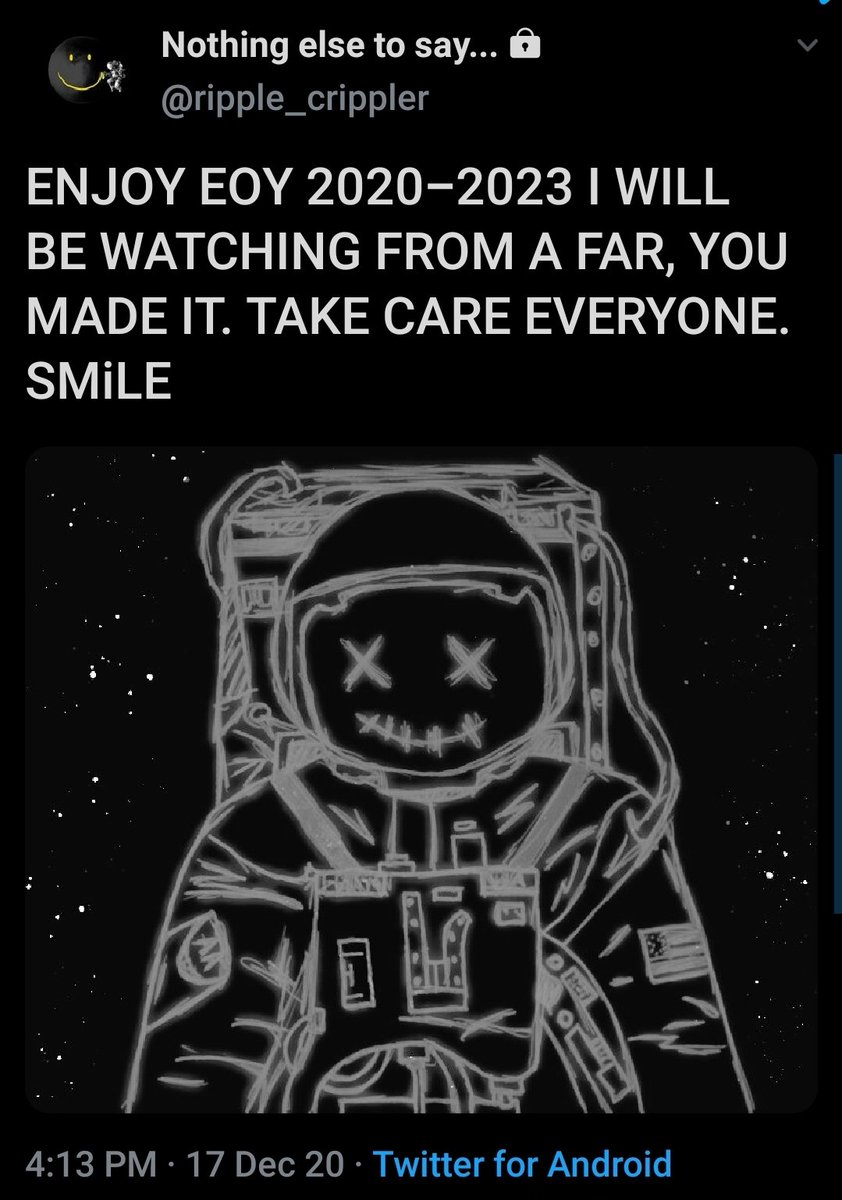
And smile XRP-eyed faces also appear related to Egypt. In particular, to the Eye of Horus. https://t.co/i4rRzuQ0gZ 5/*


I believe that @ripple_crippler and @looP_rM311_7211 are the same person. I know, nobody believes that. 2/*
Today I want to prove that Mr Pool smile faces mean XRP and price increase. In Ripple_Crippler, previous to Mr Pool existence, smile faces were frequent. They were very similar to the ones Mr Pool posts. The eyes also were usually a couple of "x", in fact, XRP logo. 3/*

The smile XRP-eyed face also appears related to the Moon. XRP going to the Moon. 4/*

And smile XRP-eyed faces also appear related to Egypt. In particular, to the Eye of Horus. https://t.co/i4rRzuQ0gZ 5/*






















